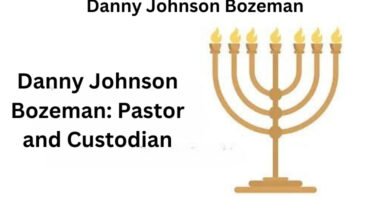
örviri: Healing in Icelandic Society
örviri Centuries-old Icelandic healing practice for body, mind, and spirit, captivating local and global interest.Welcome to the mystical land of Iceland, where ancient traditions still hold sway and the healing powers of örviri are deeply revered.
In this enchanting corner of the world, where glaciers meet volcanoes and ethereal Northern Lights dance across the sky, lies a centuries-old practice that has woven itself intricately into Icelandic society. Brace yourself for a journey into the captivating realm of örviri – an art form steeped in tradition yet embracing modernity, offering solace and restoration to both body and soul.
So what exactly is örviri? Prepare to be intrigued as we delve deeper into its origins, uncover its fascinating history within Icelandic culture, explore traditional healing practices passed down through generations.
What is örviri?
What is örviri? It’s a question that has intrigued many people, both in Icelandic society and beyond. örviri is a traditional healing practice that has been deeply rooted in Icelandic culture for centuries. Passed down through generations, it encompasses various methods of healing the body, mind, and spirit.
örviri can be best described as a holistic approach to wellness. It recognizes the interconnectedness of all aspects of our being and seeks to restore balance and harmony within us. This ancient practice draws upon the power of nature, herbs, energy work, touch therapy, and spiritual guidance.
In örviri, healers play a vital role. These individuals possess deep knowledge about herbal remedies and have honed their skills through years of training and apprenticeship. They are considered experts in understanding the human body’s energy systems and how they relate to overall health.
Traditional healing practices encompassed by örviri include laying on of hands for pain relief or energetic balancing; herbal remedies prescribed for specific ailments; steam baths using local herbs; rituals involving chanting or drumming to shift energies; divination techniques such as rune casting or pendulum dowsing.
History of örviri in Icelandic Society
Icelandic society has a rich history of embracing alternative healing practices, and one such practice is örviri. The roots of örviri can be traced back to ancient times when healers played an important role in the community. These healers possessed deep knowledge of herbs, charms, and rituals that were believed to have the power to cure ailments.
In Icelandic culture, healing was seen as a holistic process that encompassed physical, emotional, and spiritual well-being. Healers were highly respected members of society who dedicated themselves to helping others overcome illnesses and restore balance in their lives.
The practice of örviri evolved over the centuries but remained deeply rooted in traditional beliefs and customs. Healers passed down their knowledge through apprenticeships within families or close-knit communities. This ensured that the wisdom of örviri was preserved and carried on from generation to generation.
With time, modern influences began to shape the practice of örviri. While some traditional methods are still embraced today, there has been an integration with contemporary medical practices as well. Many healers now combine elements of herbal remedies with conventional medicine for a more comprehensive approach to healing.
However, it’s worth noting that not everyone embraces örviri wholeheartedly. There have been controversies surrounding its effectiveness and legitimacy as a form of treatment. Critics argue that relying solely on alternative healing methods may delay or prevent individuals from seeking proper medical care when needed.
The Role of Healers in Icelandic Culture
Healers have played a significant role in Icelandic culture throughout history. In this remote and harsh land, where the forces of nature can be both breathtakingly beautiful and unforgivingly brutal, the need for healing has always been paramount.
In ancient times, healers were revered members of society who possessed deep knowledge about herbs, remedies, and spiritual practices. They were seen as intermediaries between humans and the supernatural realm, capable of harnessing divine energy to restore health and harmony.
These healers held a special place in Icelandic communities. They would travel from village to village, offering their services to those in need. Their reputations often preceded them as word spread about their remarkable abilities to cure ailments such as fevers, wounds, or even more mysterious afflictions believed to be caused by malevolent spirits.
Today, while modern medicine has made great strides in Iceland like elsewhere around the world there is still a deep respect for traditional healing practices. Many Icelanders seek out alternative therapies such as acupuncture or herbal remedies alongside conventional treatments.
The role of healers continues to evolve with the changing times. Some have embraced new technologies and incorporate elements such as energy healing or crystal therapy into their practice. Others focus on preserving ancient traditions by studying under experienced practitioners and passing down their knowledge through apprenticeships.
Traditional Healing Practices
Traditional Healing Practices in Icelandic society are deeply rooted in the country’s rich cultural heritage. These practices have been passed down through generations, offering unique insights into wellness and holistic healing.
One of the key aspects of traditional healing is the use of herbs and natural remedies. Icelandic healers have a deep knowledge of botanical medicine and utilize various plants to treat ailments. For example, angelica root has long been used for digestive issues, while yarrow is known for its anti-inflammatory properties.
Another important aspect of traditional healing is energy work. Healers believe that our bodies have an energetic system that can be balanced and restored through techniques such as Reiki or laying on of hands. This approach aims to address imbalances within the body’s energy field and promote overall well-being.
In addition to herbs and energy work, ancient rituals play a significant role in traditional healing practices. These rituals often involve chanting, drumming, or other forms of sound therapy to create a harmonious environment for physical and spiritual healing.
Modern Adaptations of örviri
In recent years, there has been a resurgence of interest in traditional healing practices, including örviri, within Icelandic society. With the rise of alternative medicine and holistic approaches to wellness, many Icelanders are turning to these ancient healing techniques for both physical and emotional well-being.
One modern adaptation of örviri is the incorporation of herbal remedies into treatment plans. Healers now utilize various plants and herbs that have long been known for their therapeutic properties. From calming chamomile to immune-boosting echinacea, these natural ingredients are believed to promote healing from within.
Another adaptation is the integration of energy work into örviri sessions. Practitioners often use techniques such as Reiki or crystal therapy to balance the body’s energy centers and promote overall harmony. This approach acknowledges the interconnectedness between mind, body, and spirit – a fundamental concept in Icelandic culture.
Controversies and Criticisms
As with any traditional healing practice, örviri has not been immune to controversies and criticisms. Some sceptics argue that there is no scientific evidence to support the effectiveness of these healing methods. They claim that it is nothing more than a placebo effect or simply attributed to natural healing processes.
Another point of criticism revolves around the lack of regulation and oversight in the field of örviri. As it is not a formally recognized medical profession, there are concerns about untrained individuals offering services without proper qualifications or expertise. This raises questions about patient safety and ethical considerations.
Additionally, some people view örviri as superstitious or outdated, preferring instead to rely on modern medicine for their health needs. They may see traditional healing practices as incompatible with a modern society and place more trust in scientifically-proven treatments.
Despite these criticisms, many proponents of örviri argue that its value lies in its holistic approach to wellness. They believe that by addressing the physical, emotional, and spiritual aspects of an individual’s well-being, true healing can be achieved.
Debates surrounding örviri highlight the ongoing dialogue between tradition and progress within Icelandic society. While some may dismiss it as pseudoscience or folklore, others continue to embrace this ancient practice for its potential benefits in promoting overall health and harmony.
The Future of örviri in Icelandic Society
As society continues to evolve, so too does the practice of örviri in Icelandic culture. While traditional healing practices have deep roots in the country’s history, there is a growing interest and acceptance of modern adaptations.
One potential future for örviri lies in its integration with conventional medicine. As more research is conducted on alternative therapies, there is an opportunity for healers to collaborate with medical professionals and contribute their unique knowledge and techniques to enhance patient care.
Another possibility is the continued growth of wellness tourism in Iceland. With its stunning natural landscapes and reputation as a place of healing, Iceland has become a popular destination for those seeking rejuvenation and relaxation. This presents an opportunity for healers to offer their services to tourists from around the world, further promoting örviri on an international scale.
Additionally, technology may play a role in shaping the future of örviri. Online platforms could provide opportunities for healers to connect with clients remotely or offer digital resources such as guided meditation or herbal remedies.
Conclusion
örviri holds a significant place in Icelandic society, bridging the gap between traditional and modern healing practices. Its roots run deep in the history of the country, with healers playing an integral role in promoting physical and spiritual well-being.
Over time, örviri has witnessed changes and adaptations to meet the needs of a changing society. While some may view it with scepticism or criticism, there is no denying its impact on individuals seeking alternative forms of healing.







